by Nick Drew | Wed 25 Jan 2023
Daring to be Different
With the mouth-watering prospect of seeing the full production model of Dressta’s revolutionary TD-16N dozer at Conexp-Con/Agg in Las Vegas in March, I thought it was a great opportunity to re-run my article on the machine that featured in Earthmovers recently, bringing it to life on the internet with alternative photos and video footage.
We first caught sight of Dressta’s revolutionary new TD-16N in the metal, when it was a show stopping exhibit on the LiuGong-Dressta stand at the CONEXPO-CON/AGG trade show in Las Vegas in 2020, where it was justly rewarded with the prestigious Red Dot award for Product Design.
Development had started as far back 2013 when the combined visions of talented American engineer Edward Wagner and the equally talented Industrial Designer Gary Major from the UK, put forward their thoughts and early sketches.
The goal was clear, to produce a dozer radically different, in terms of all round visibility, with a mid-mounted cab and safe access to that cab by means of a rear mounted step and hand-rail arrangement the like of which had never been designed before.
Effectively the team were looking to re-write the rule-book of dozer design, something that has not really changed since the launch of the Cat D10 in 1977. Talking about the concept Gary Major said, “We set out to create the very best dozer for operators, to do this we put the operator at the centre of the machine. We literally started with the blade, the tracks and the operator and then built everything around them without compromise”.
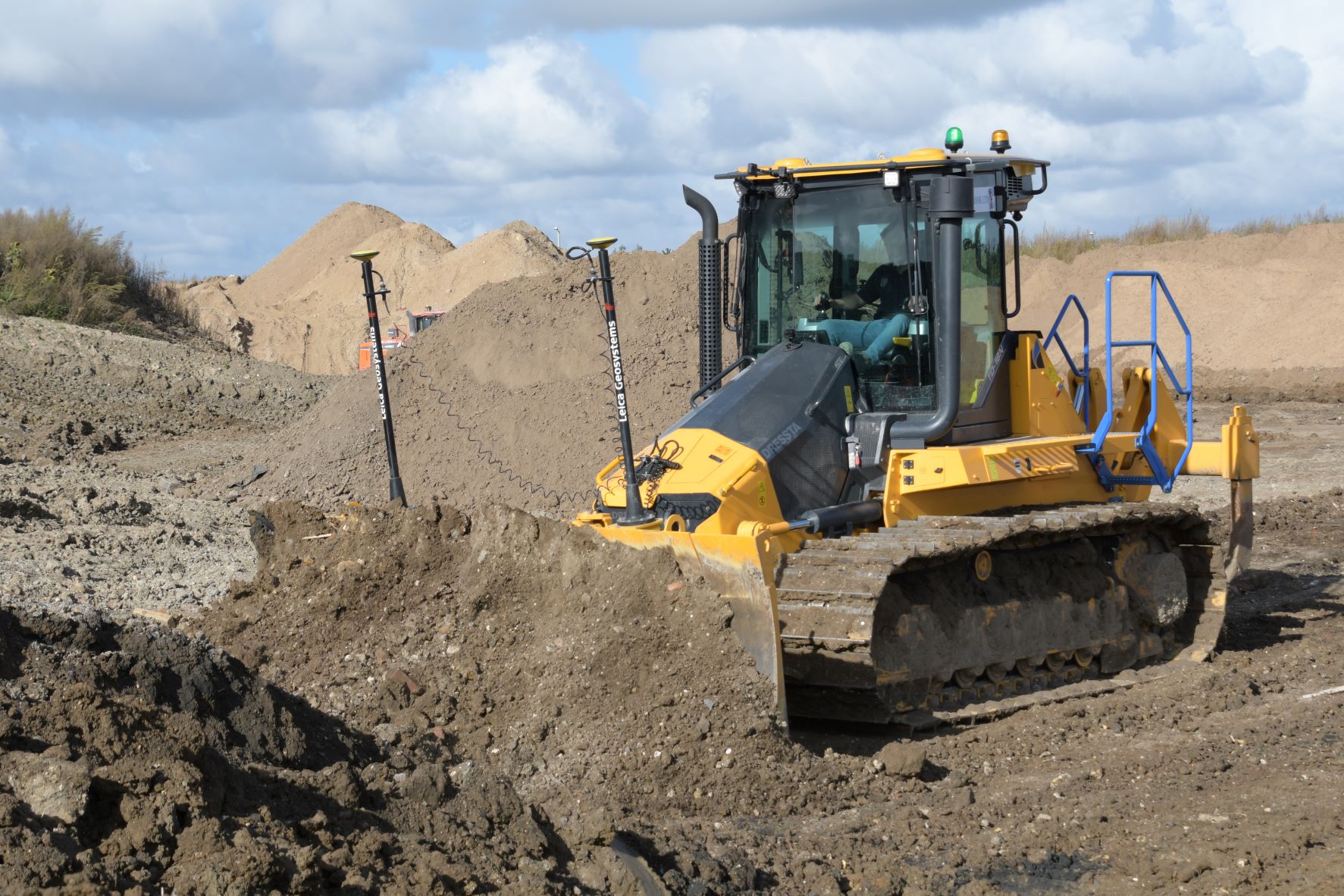
Ed and Gary were also fortunate enough to secure the services of a world class dozer operator Jacob Cope, a professional golf course developer, who had agreed to act as a consultant during the design phase of the TD-16N.
One of the most striking things for me on this machine is the access point. For as long as I can remember mounting a dozer has always been a hazardous operation especially during the winter time when tracks are inevitably clagged in mud, first stepping on to the blade arms before climbing up onto the tracks, its often an accident waiting to happen.
Dressta’s new rear access system eliminates that risk, and with just four steps, while maintaining 3-points of contact, you are up at the cab platform level and straight in the cab through the door. Its simplicity is incredible, and it beggars the question as to why nobody had never thought of this idea before, a sentiment that was echoed by Ryan Holbrook of Norwich based Rory J Holbrook Ltd who had the machine on site for evaluation.
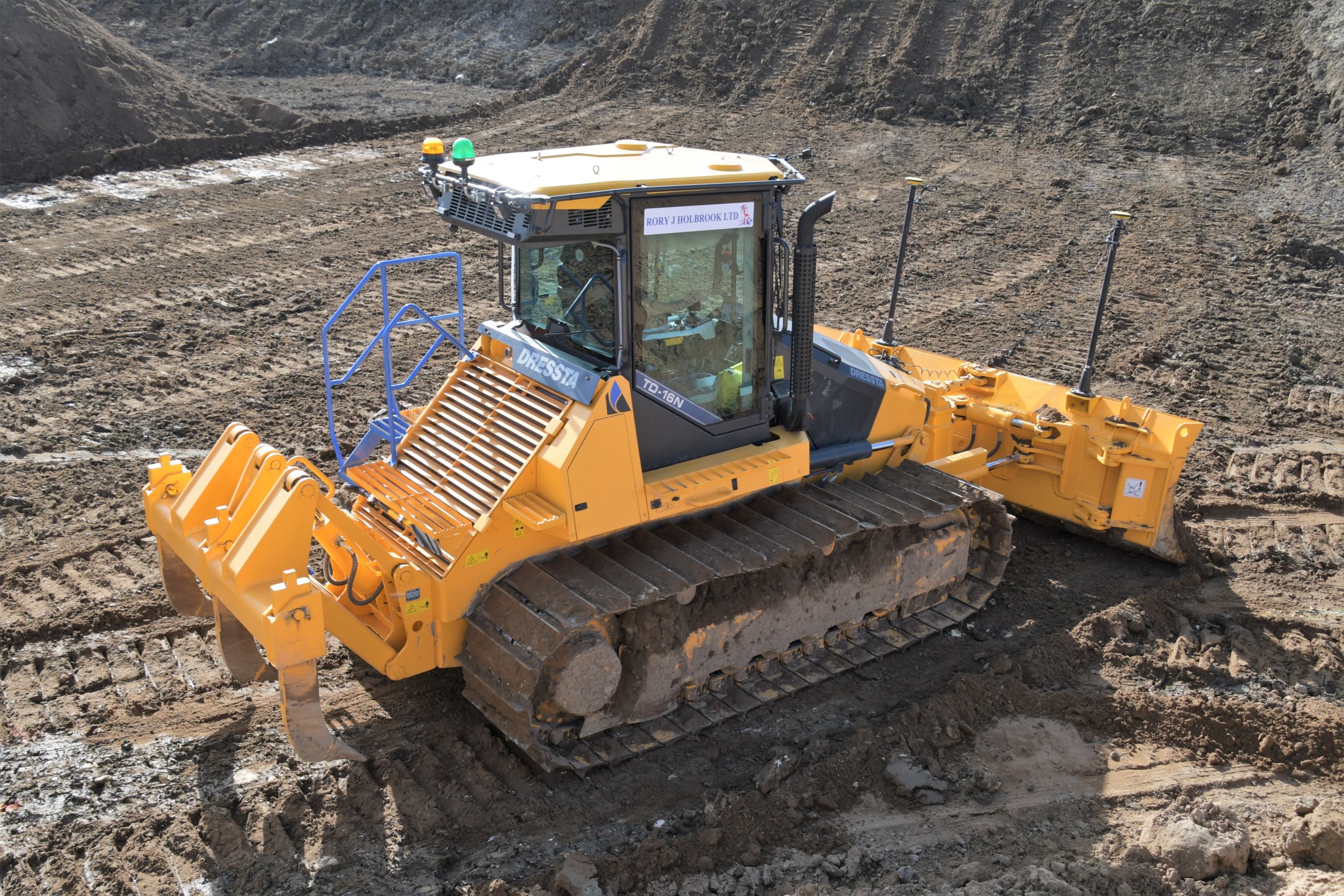
It was just over a year ago that Earthmovers were invited to visit R. J. Holbrook’s recycling facility just a stones throw away from RAF Lakenheath, where Rory’s son Ryan had been putting the pre-production machine through its paces in near secrecy. And he had plenty to go at too, as they were constructing a 30m high noise protection bund involving the moving and shaping of some 2.5 million cubic metres of material.
Ryan was also impressed with the all-round visibility but in particular with what the design team have done to the front of the machine, having effectively flipped the traditional dozer design on its head. Mounting the large cooling pack to the rear of the machine has enabled them to create a much more streamlined and sloping front bonnet, which further enhances the view to the blade.
Adam Pitman the Global R&D Director Bulldozers – LiuGong-Dressta was on hand to give us a tour around the machine.
Starting at the business end, the machine features a 6-Way VPAT blade which is 3,981mm in width and has a material capacity of 4.3m3. To meet with UK transportation legislation the blade has fold-in corners to ensure that it’s below the regulation 3m when sitting on a low loader.
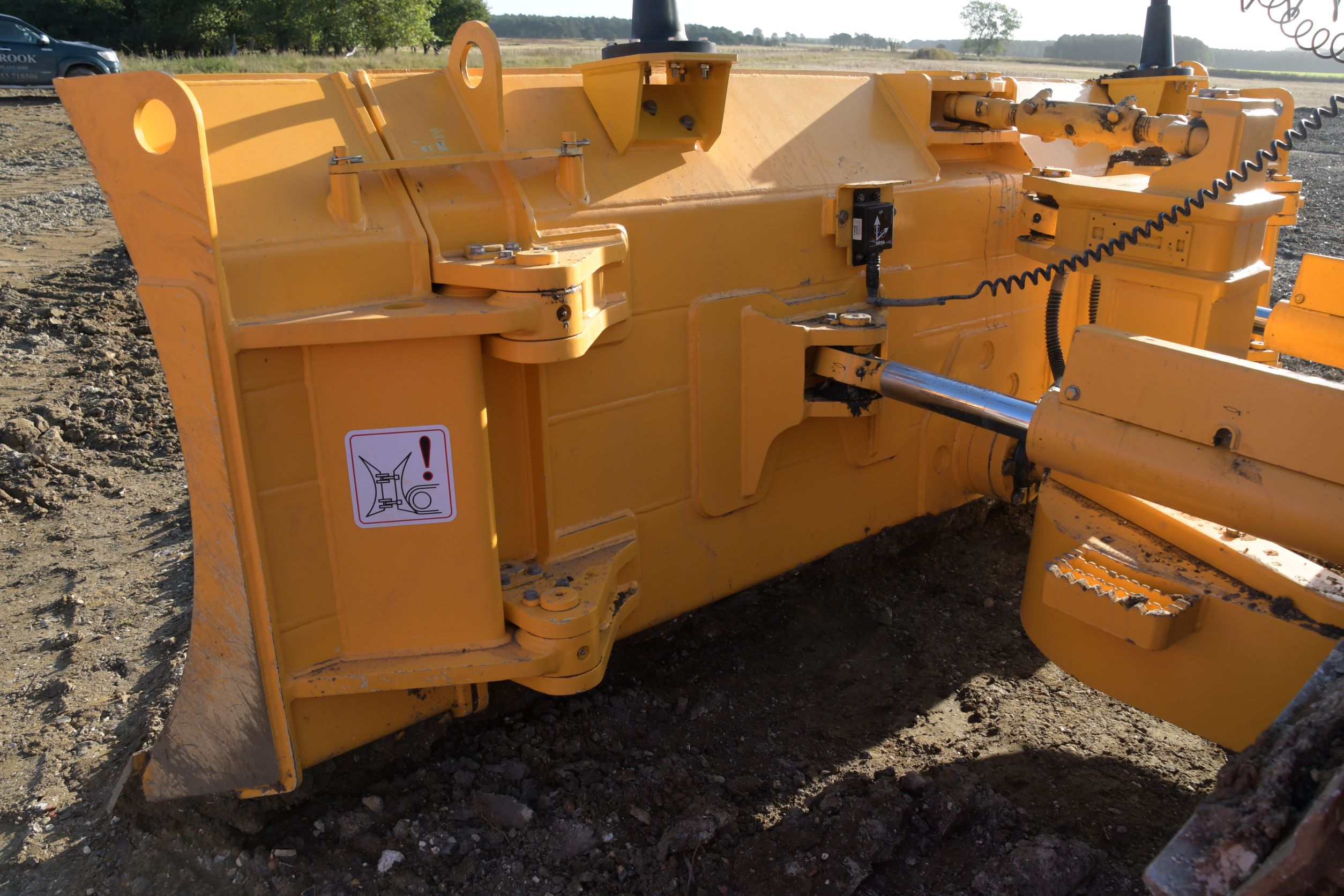
The unit was also fitted with the Leica Geosystems MC1 3D machine control system with ConEx, in addition to other diagnostic equipment that was installed on the machine so that the team at Dressta in Poland could monitor the machines performance during the course of the various trials it has been on, which eventually amassed in excess of 10,000 hours on the meter.
The TD-16N in this LGP variant fitted with 760mm single grouser track shoes, tips the scales at around 20.8-tonnes when fitted with the fold-in blade, and is powered by a Stage V emissions compliant fuel-efficient Cummins 6-cylinder diesel engine, which has a power output rating of 127kw (170hp) @2,000 rpm, with a maximum torque rating of 881Nm (650lb-ft) @1,300rpm.
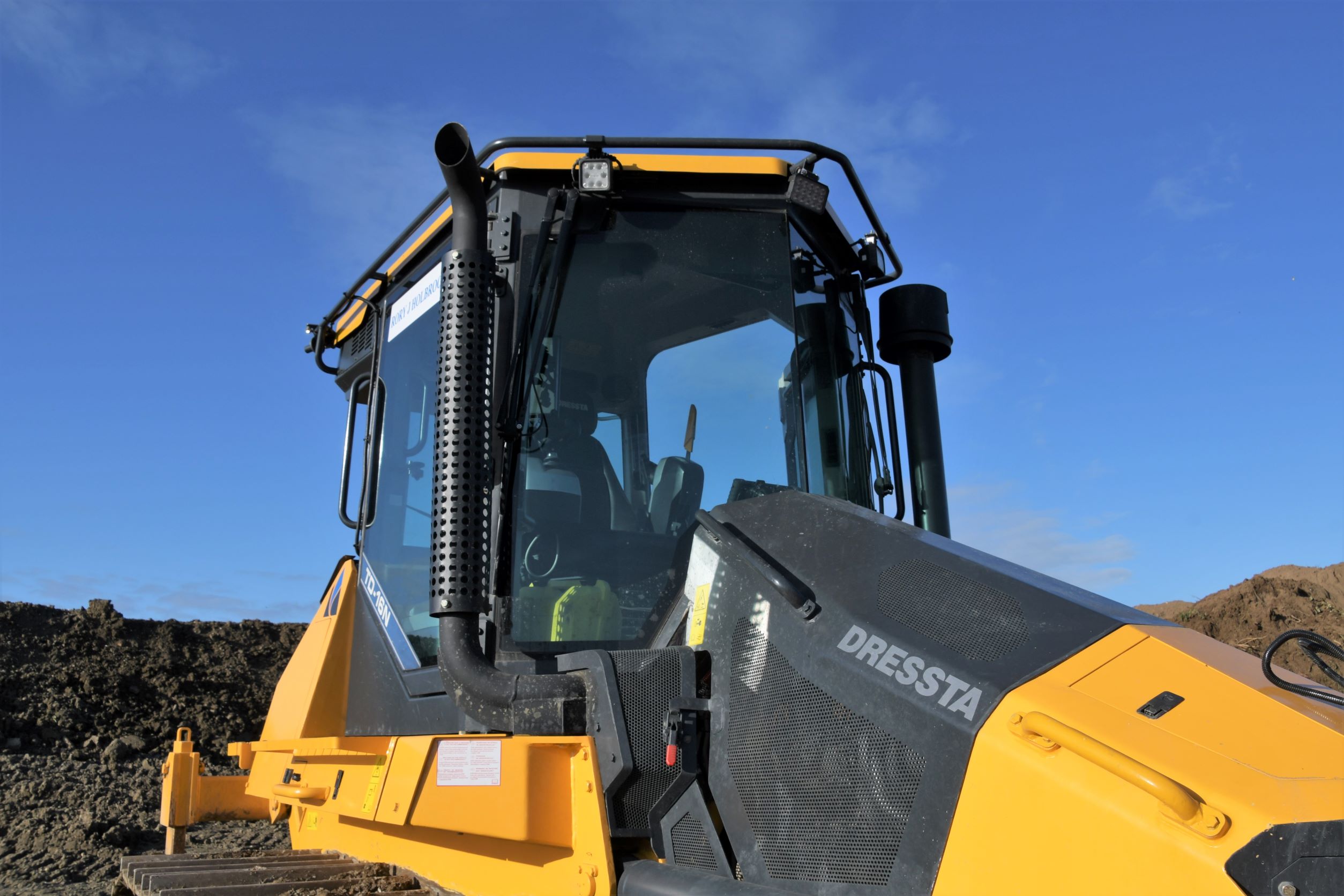
The powerpack is mounted low down in the chassis which further facilitates the sloped bonnet design in addition to offering a lower centre of gravity.
The front nose cone of the machine is home to both the fuel and AdBlue tanks both being extremely easy to reach from ground level. This also improves the balance of the machine with the cooling pack and hydraulic oil tank located at the rear of the machine.
In addition, all routine daily maintenance, like engine oil, and coolant levels can also be completed from ground level without the need to clamber up onto the tracks, a great feature for operator safety.
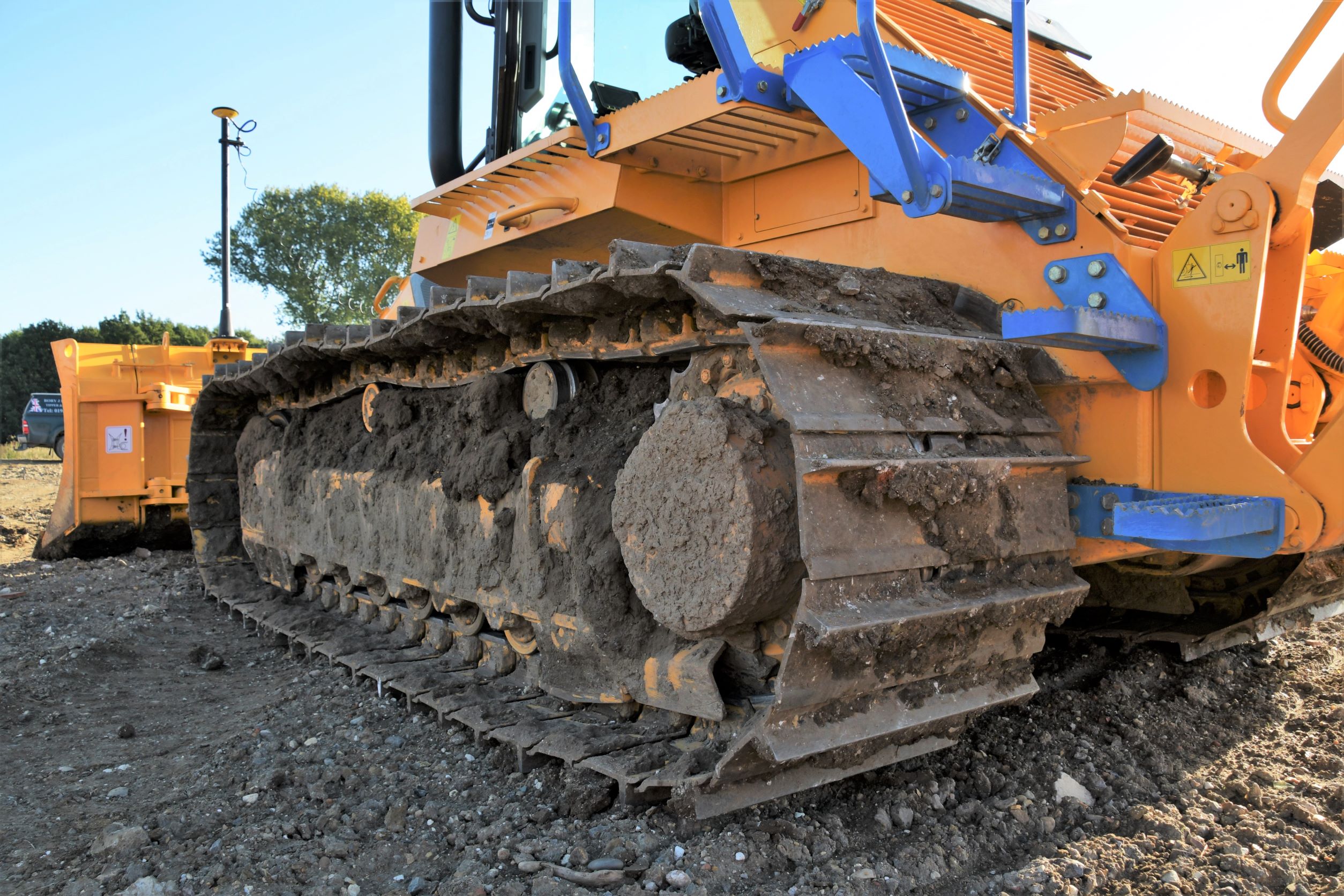
For more in depth maintenance and repair work the entire cab module can be raised upwards by means of a hydraulic hand pump system, which once raised offers great access to the drive pumps, working pumps, hydraulic valve blocks, batteries and exhaust after treatment system.
In terms of the powertrain, the machine is fitted with an automatic, indefinitely variable, dual path, hydrostatic transmission, with driveline motor and final drives all supplied by blue chip component producer Rexroth. The hydraulic system for blade, ripper and joystick controls are also provided by Rexroth.
This example was fitted with a 3-shank ripper assembly, and according to Dressta’s technical specifications the machine is capable of a drawbar pull and ripping power of some 330kN.
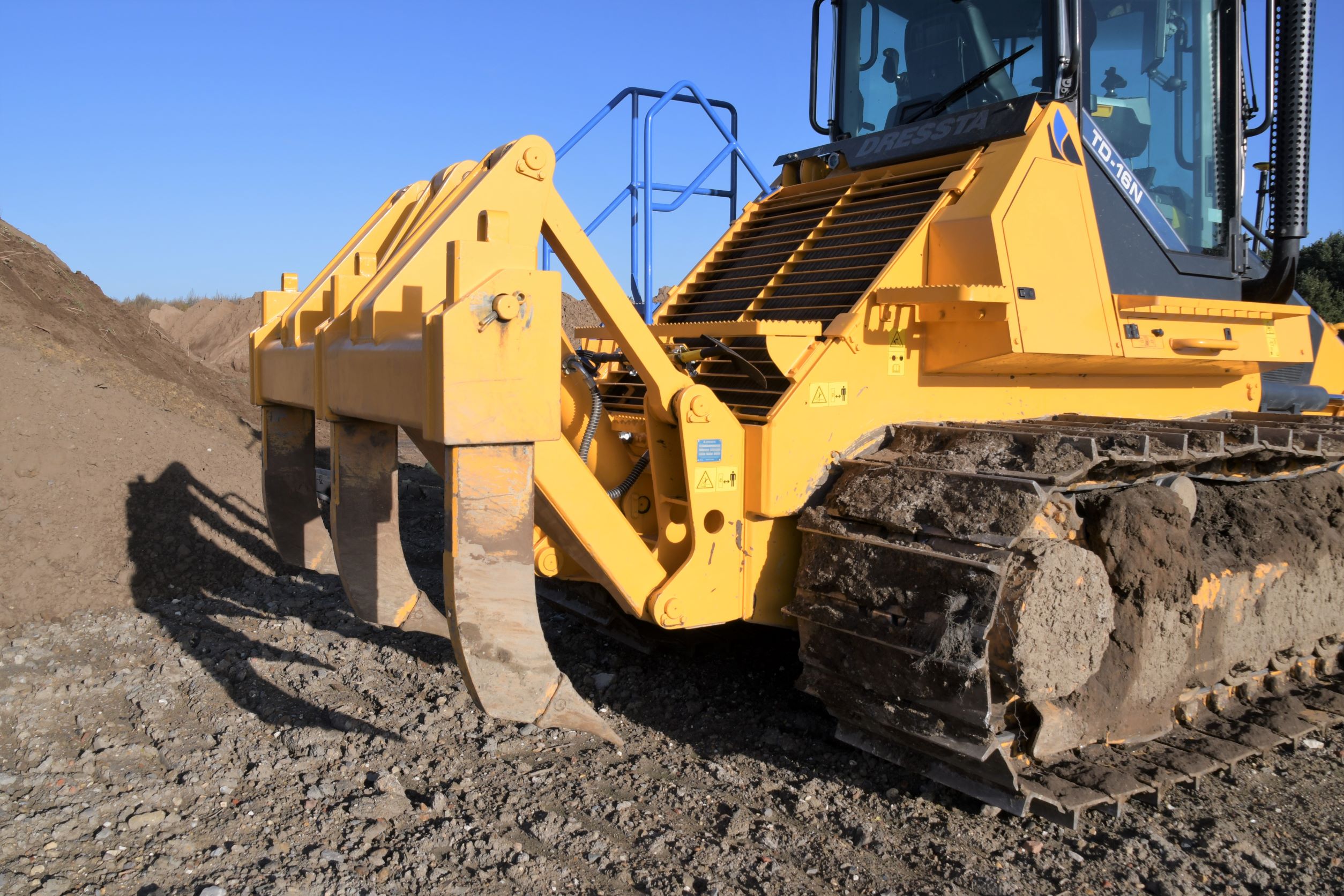
The cooling pack at the rear is among the largest of its kind, and its size has enabled them have a reduced fan speed which in turn reduces noise levels. Installing the pack at the rear also makes it less vulnerable to dust build up, a reversible fan function also helps to blow out any debris build up that does occur periodically.
To fully appreciate what the design team have created with the TD-16N, you need to take a look from inside the cab and I was invited to take a look and to spend some time at the controls.
Just as I experienced in Las Vegas, being able to climb up to the cabin via the rear access system just blows your mind, even though for my little legs the first step is a bit on the high side, having said that, it needs to be where it is to keep it up out of the ground.
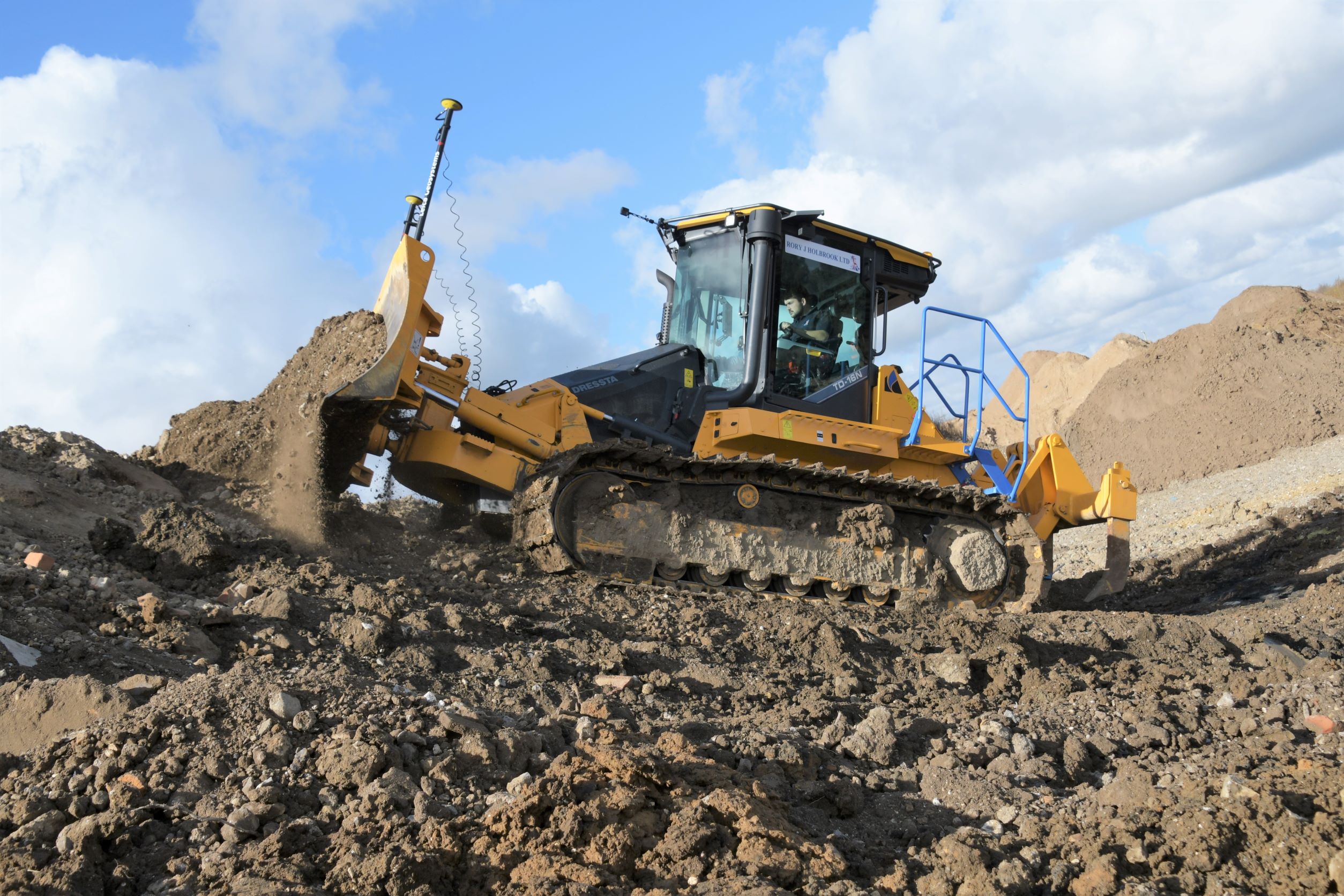
The steps and handrail offer a great sense of safety and security as you progress up towards the cab. Once in the seat that’s when the view on offer really hits home. The two-piece bonded front screen provides the best visibility on offer from any dozer on the market today, with the exhaust stack and air breather situated nicely out of the way to the sides of the cab. As such there is no more peering around the bonnet in front of you, with this machine you get a totally unobstructed view of the blade and the ground ahead of you.
Of course, experienced dozer operators will tell you, that you don’t need to see the blade, its all done by feel in the seat, and that’s a very valid statement, but who wouldn’t really prefer a clear view ahead of you while running one of these machines, with no blind spots and less potential for accidents.
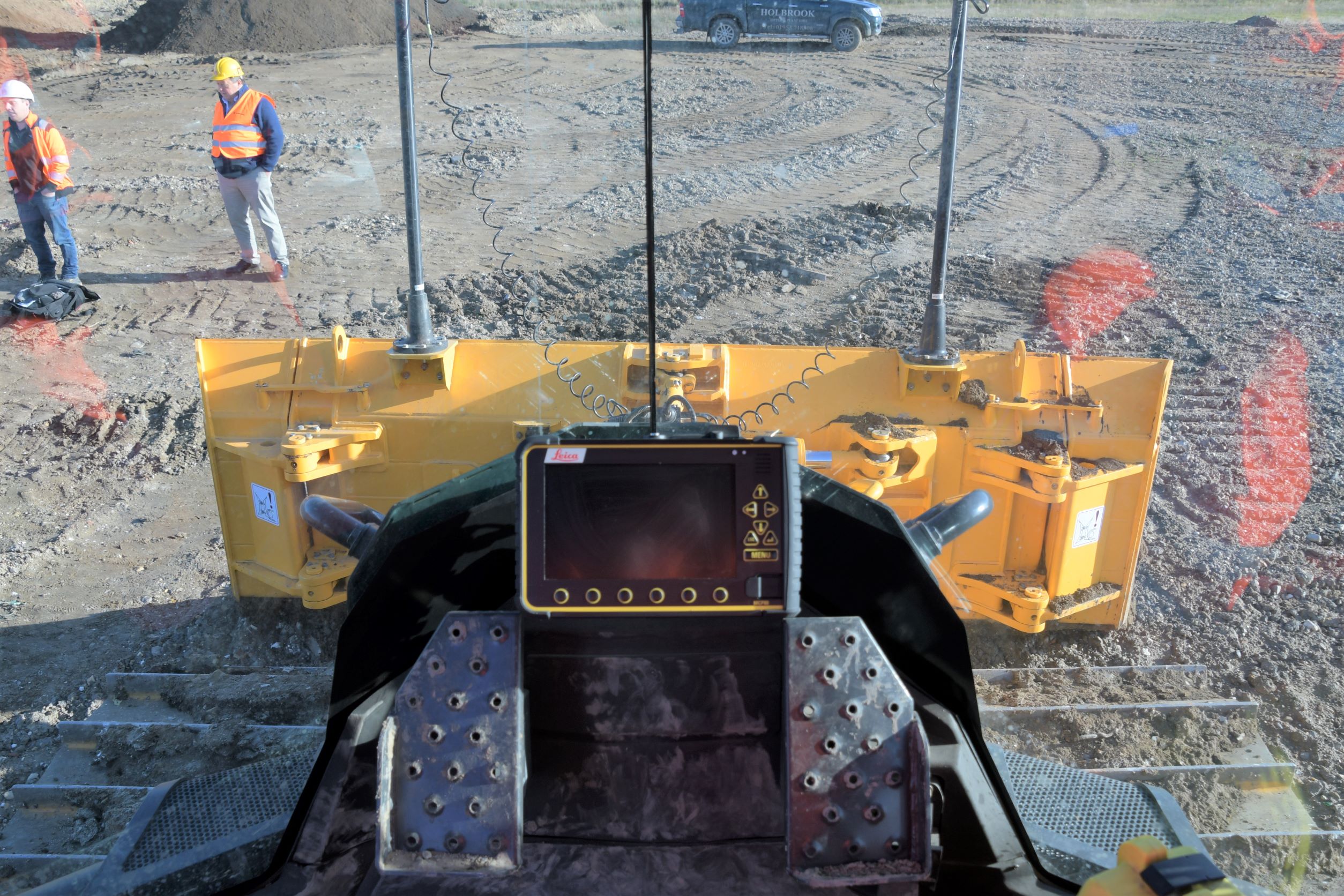
I got ensconced in the comfortable air suspension seat, and surveyed my surroundings. Two big foot pads are located in front of you for resting your feet on. In the middle of them we found the Leica MC1 control monitor, which could easily have been made to measure as it fits so well and does not affect forward visibility at all.
The cab is a four-pillar affair, and on the forward right-hand-side post, we discover the large high-resolution touch screen pad, very similar to what you would find in any modern hydraulic excavator these days, easy to navigate and very intuitive.
The interior of the cab is clean cut and workmanlike and I found the controls have been kept to a minimum for ease of use.
On the right-hand console there is potential for 6 rocker switches, only 3 of which were in use on this model, there was a 12v socket, USB port for connecting a mobile device, horn button, and rotary throttle dial, and towards the rear there is that absolute essential for any self-respecting operator, the cup holder for the morning brew!
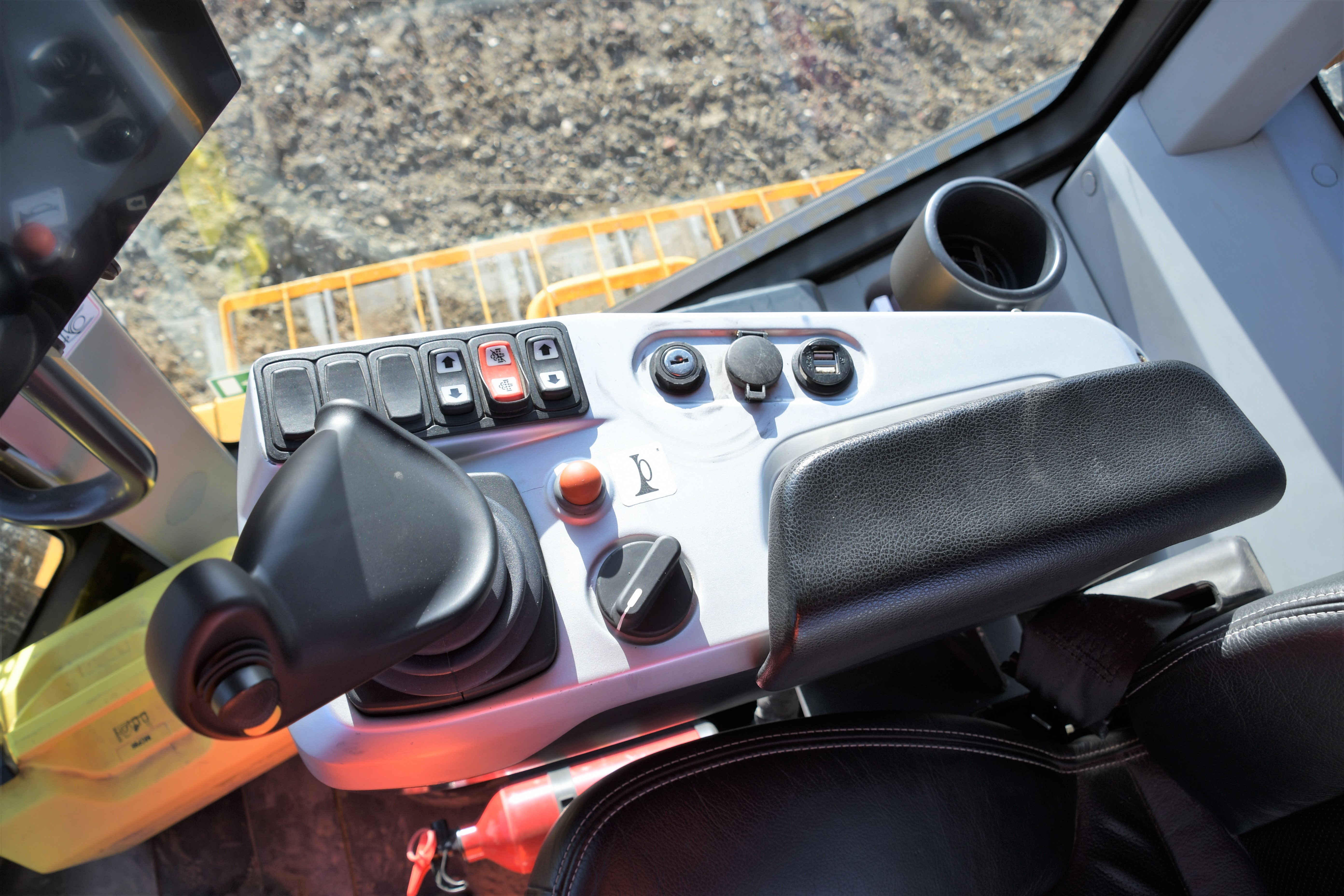
In the roof on the right-hand side there is a fitted radio which can also be connected by Bluetooth to the operator’s phone, and below that is the air-conditioning control pad. For those who prefer the fresh air the machines side windows are hinged and can be opened outwards if required.
The control joysticks are typical of what you would find in any modern dozer today, and fit the palm of the hand nicely. The left-hand stick controls direction and steering while the right-hand stick is used for all the blade functions.
It’s very rare for me to run a dozer, but I was keen to take the TD-16N for a spin. Cranking up the throttle I was very surprised by how quiet the machine is when running, something that Ryan had mentioned during our earlier chat.
 - Copy.jpg)
Taking it really steady to start with I found the controls to be really responsive and user friendly and it was a joy to use. I was only tickling a bit of soil around free-hand but it was quite clear to me that this dozer could pack a punch when being used in anger by a skilled operator like Ryan, who we had witnessed using it earlier in the morning.
The spacious cabin is unlike any other dozer I had sat in previously, and you certainly didn’t get that claustrophobic feel that some dozers give you inside the cab.
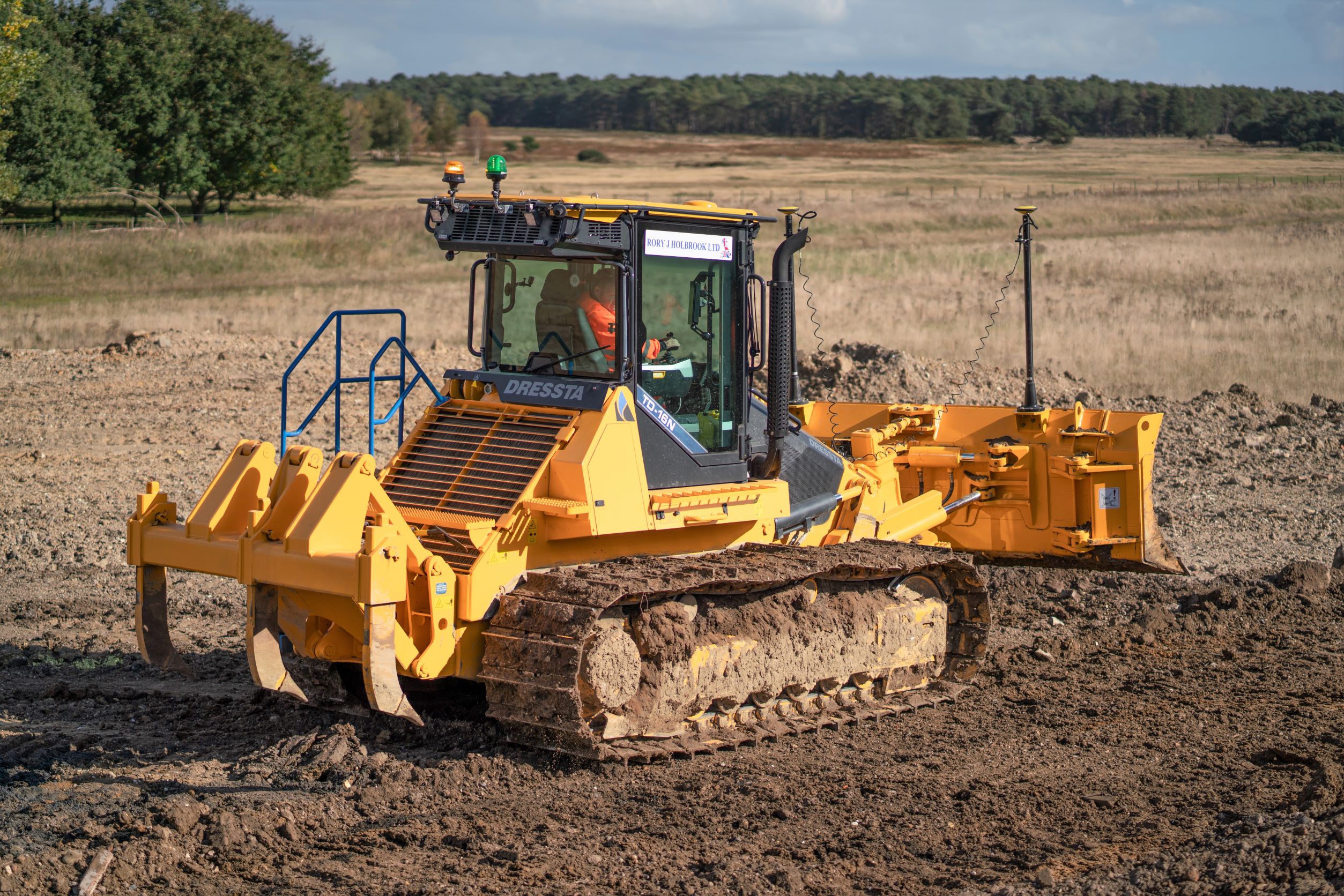
Dressta, who are based in Stalowa Wola, Poland was founded as far back as 1938, has a long historical association with building bulldozers and connections with some of the biggest names in the dozer industry in the past most notably International Harvester.
While the dozer market these days is dominated by the perceived big three manufacturers, I feel the design team behind the Dressta TD-16N, have created a benchmark machine that could mark the future on how all dozers are designed in the future.
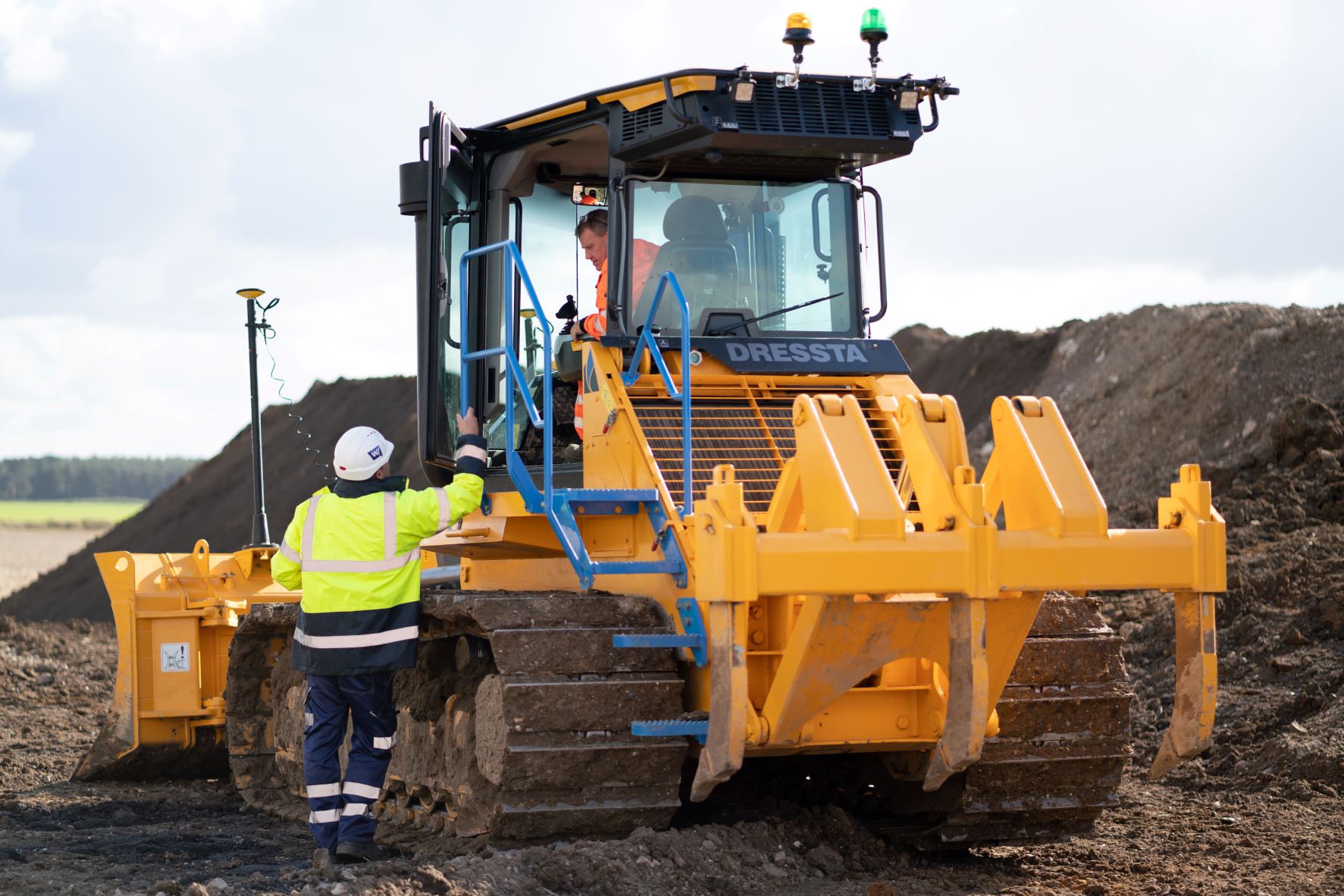
I’m also delighted to see Edward, Gary and all his design teams work finally come to fruition, as the machine is now available to purchase, we have chatted about this project many times over the years, and I look forward to following up future customers who embrace this standout dozer over the coming months and years in this magazine.
Additional photo credits go out to Chris Maginnis and Peter Haddock.